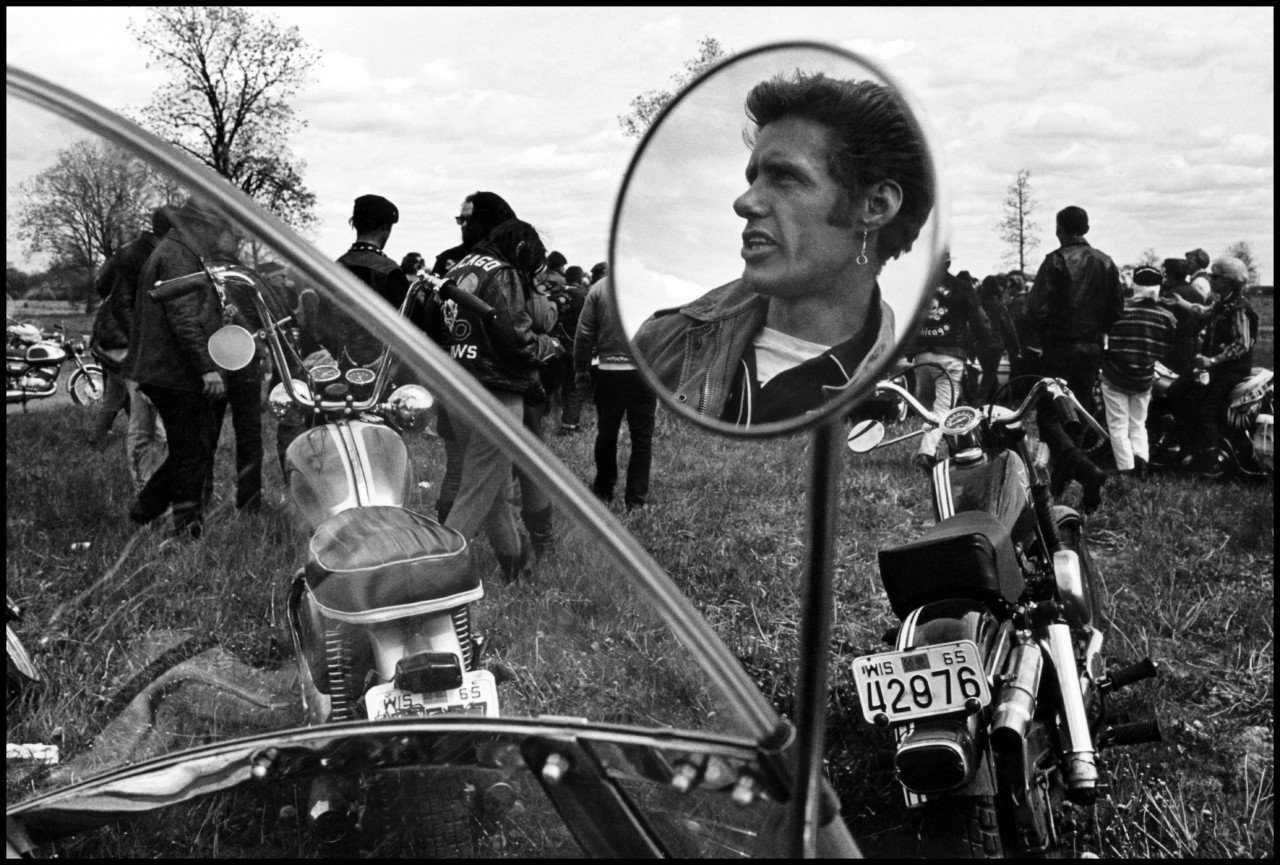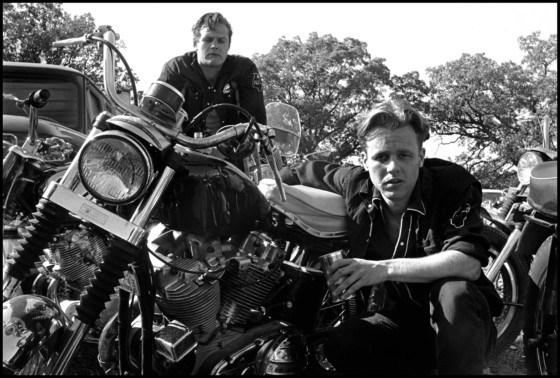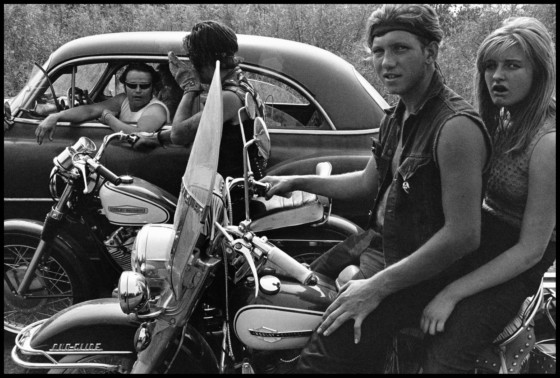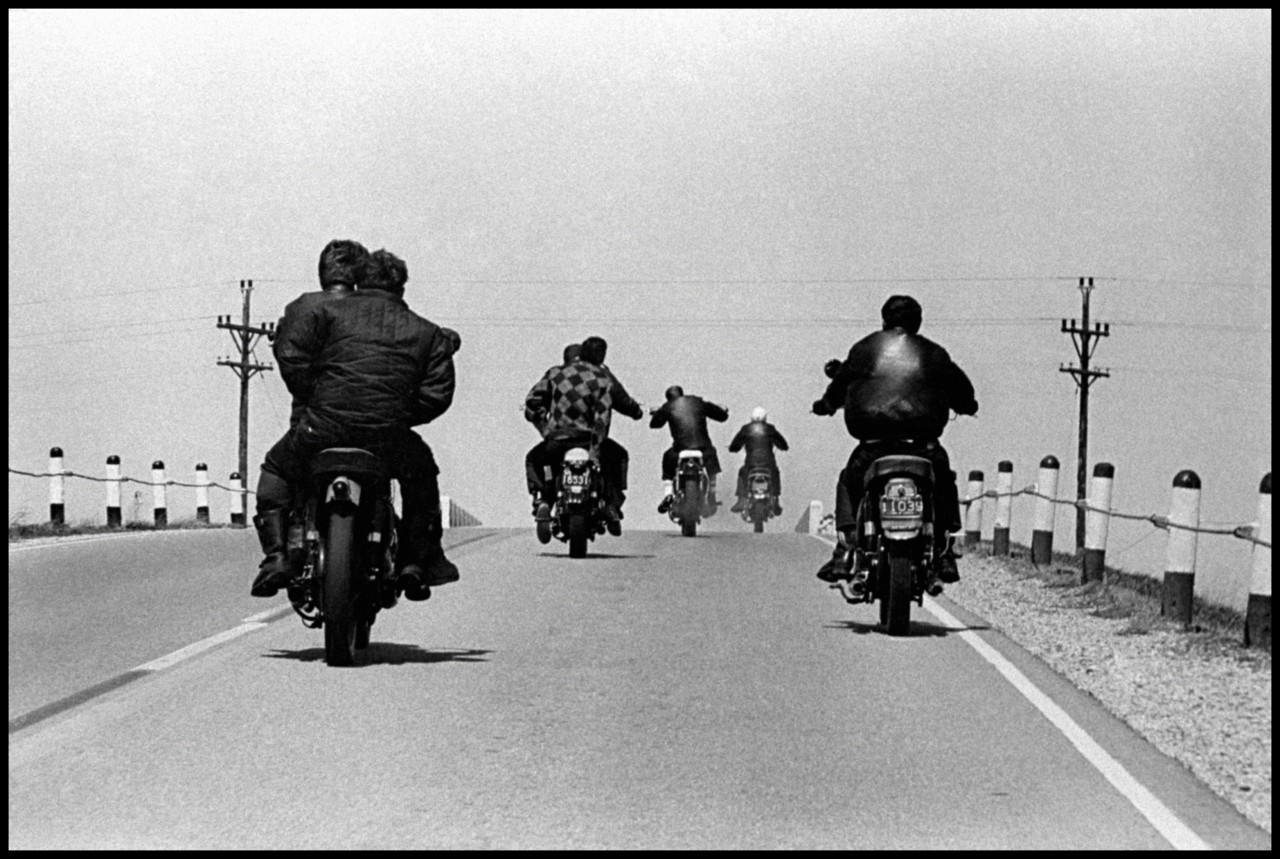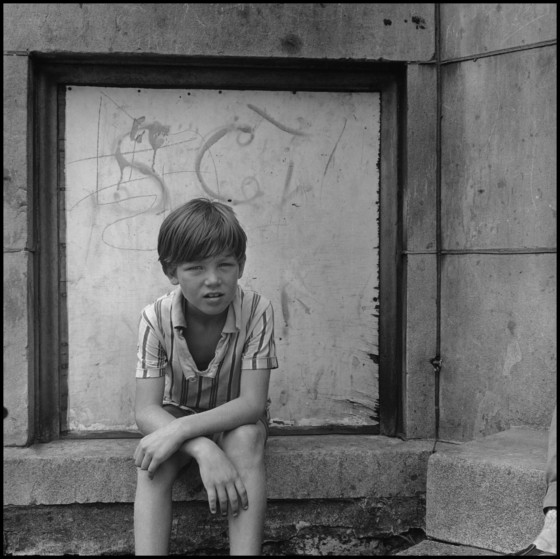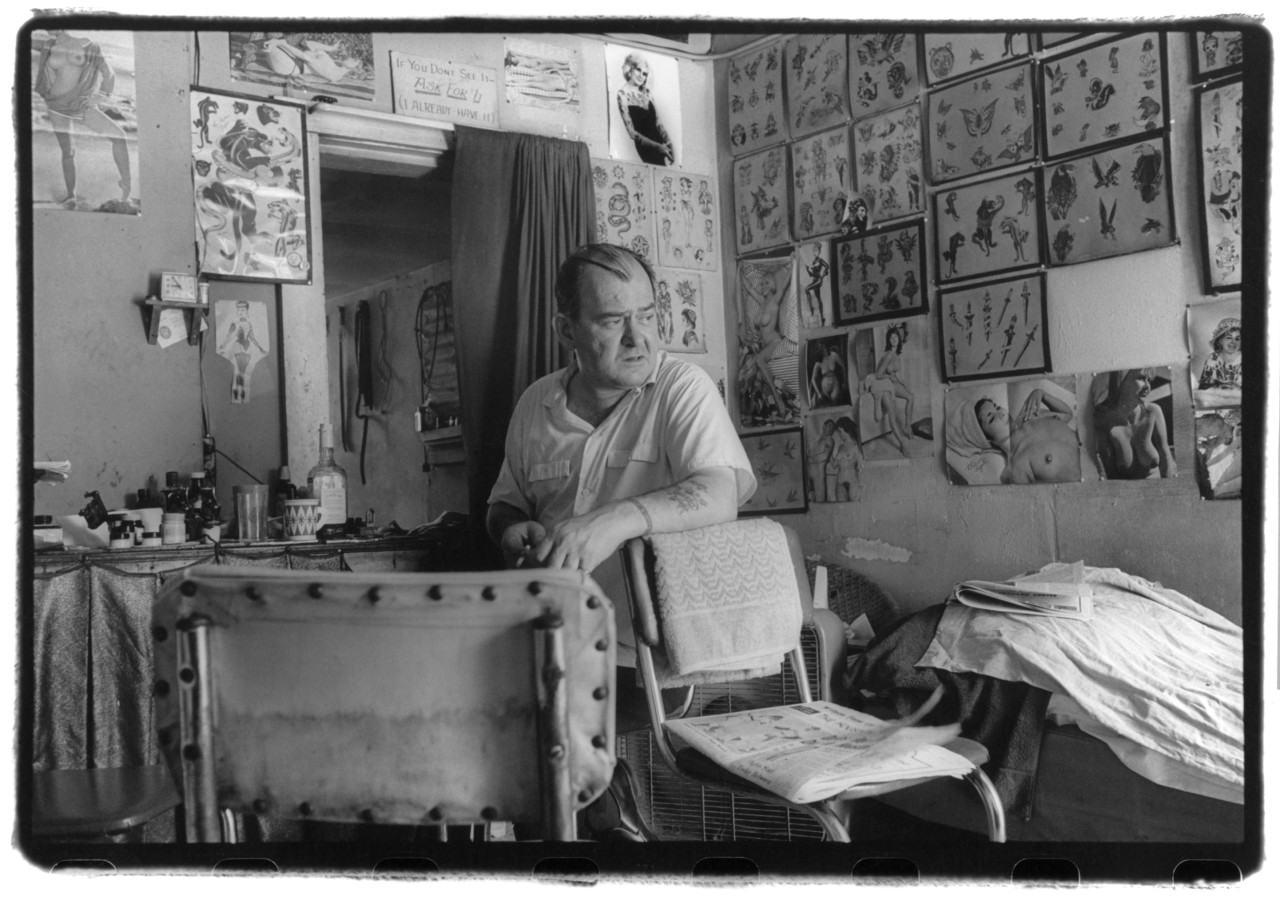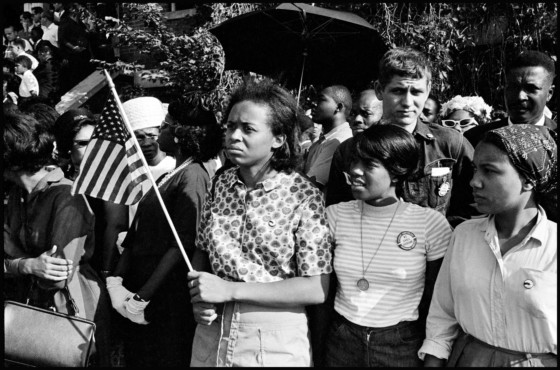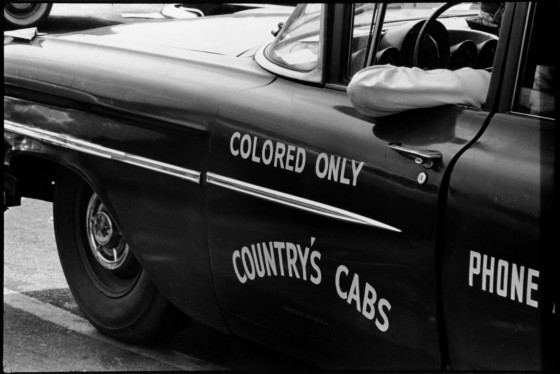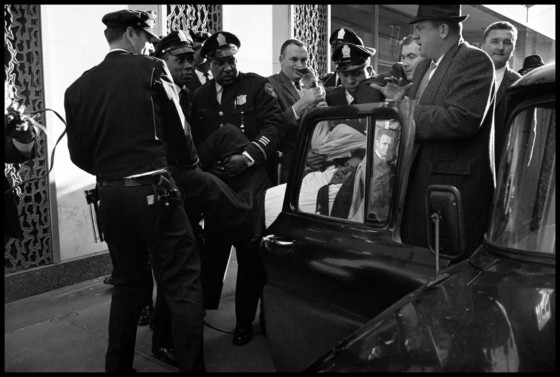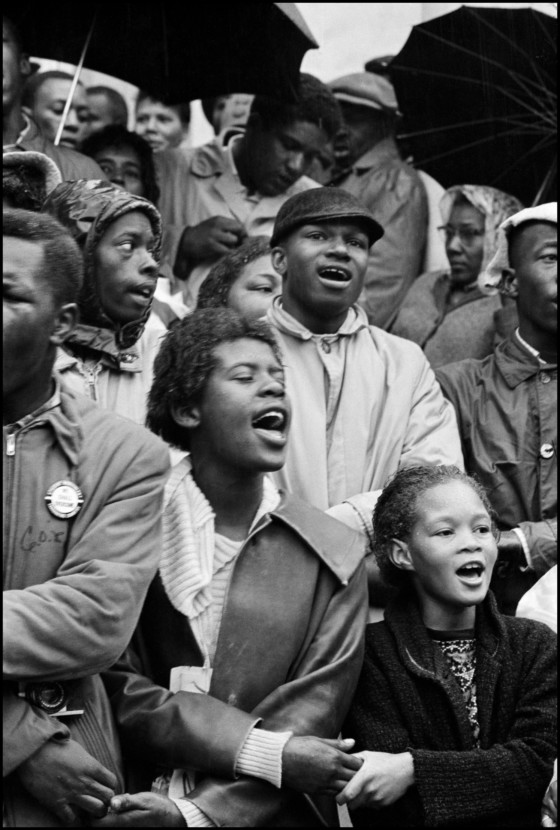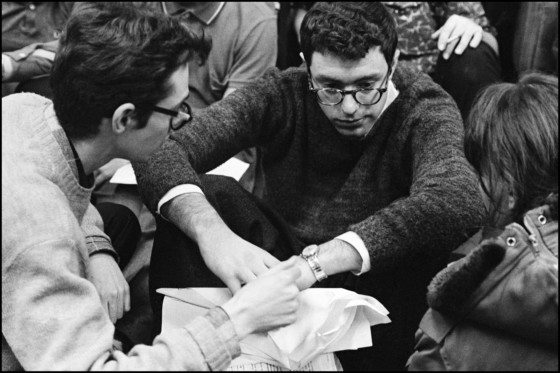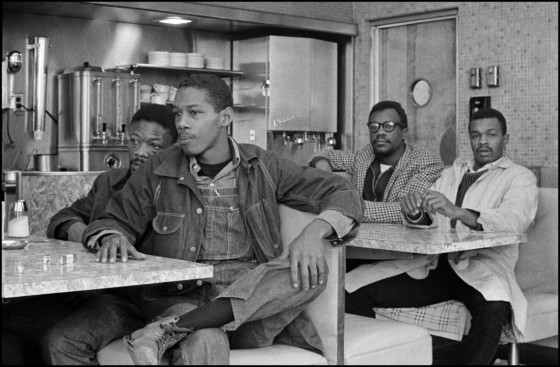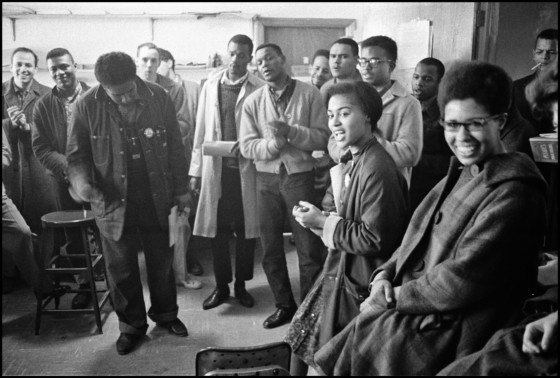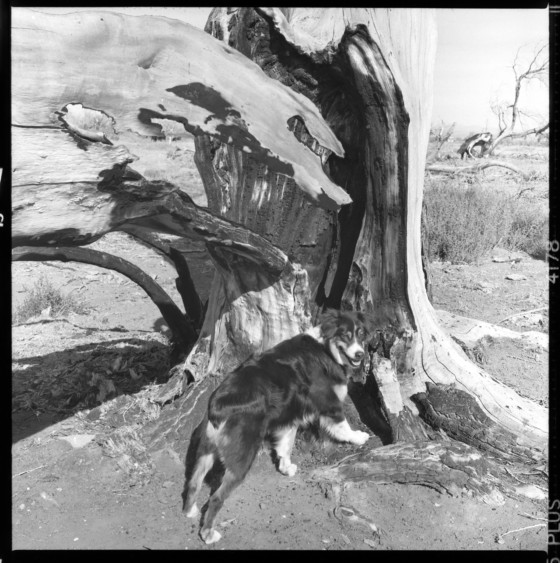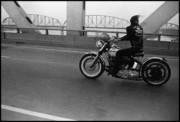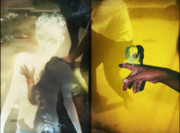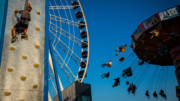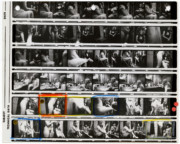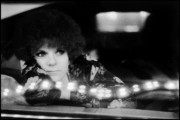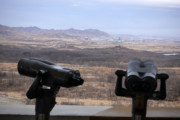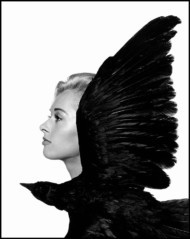American Folk Historian
Danny Lyon on a lifetime of amplifying the voices of society’s outliers
As Danny Lyon’s films are released on Vimeo, Magnum Photos speaks to the photographer and filmmaker about his work.
“My work is organic,” says Danny Lyon, explaining the serendipitous way in which, throughout his work in both photography and film, one thing always seems to lead to another; one chance encounter would always throw up some other lead to be followed. Through documenting the biker gang the Outlaws – notorious rivals of the Hells Angels – Lyon found the subject of his compelling film Social Sciences 127, which followed an eccentric, hard-drinking tattoo artist named Bill Sanders. Although a character study, rather than social commentary, the film, made in 1969, is loaded with signs of the times. Shot in Houston in late 1968, the film witnesses Sanders at work drinking and discussing the state of the nation, while tattooing his customers: bikers, draftsmen with their sweethearts, and Sanders even inked the photographer’s upper arm.
"I think you should get the hell out of that club unless it’s absolutely necessary for photo action"
- Hunter S. Thompson
Lyon had ridden bikes since he was a student and had a 650 Triumph TR6 that weighed 400 lbs. He went to a meeting of the Outlaws in a bar and one of them asked him to join the club. “I’m very friendly,” says Lyon – “I did”. Lyon’s photographs of Outlaw gang members, helmetless with the wind in their hair on the open roads of America, or of candid moments at home in Chicago, capture a mythologized facet of American youth culture. Lyon’s ‘gonzo’ journalist friend, Hunter S. Thompson, no wallflower himself, wrote to him when he heard about Lyon’s latest project: “I think you should get the hell out of that club unless it’s absolutely necessary for photo action,” Thompson wrote. “I’ve seen the Angels work and they scare the hell out of me.”
"This is my life"
- Willie Jaramillo
But for Lyon, his approach is far more than an assignment that sees him neatly parachute in and out of a situation. “This is my life,” he says, quoting Willie Jaramillo from his own film Willie (1985), who, defiantly individual and implacable in the face of authority, is repeatedly thrown into jail for relatively minor offences.
It was through a Milwaukee Outlaw named Zipco, who told Lyon to go to Galveston, Texas, that he discovered the Texas prison. “I learned about Bill Sander’s tattoo shop from Jimmy Renton, who was then a prisoner in Huntsville,” explains Lyon, “So my first film was suggested by a convict. Later Jimmy would be charged with murdering a policeman in Arkansas.” Lyon’s first written book, Like a Thief’s Dream, was an exploration of Renton’s notorious career.
Social Sciences 127 was produced on a loaned 16mm camera, a then state-of-the-art Éclair, by the Media Center which was run by James Blue and Dr Gerry O’Grady at the time. Lyon took all the footage with him to New York and moved in with Robert and Mary Frank. Bruce Davidson lived in the same building and in the summer of 1969, Lyon watched over Davidson’s apartment whilst working on his edit for the film at the Frank’s.
“I didn’t know what a mix was,” says Lyon, “so I edited it on a single track and just transferred the audio track. That means any music you hear – everything you hear – was actually happening at the moment I recorded it. It was the first and what some people think my best film.”
Following the completion of this film, Lyon hit the road again, this time headed to New Mexico. There he met Willie Jaramillo in 1971, who Lyon would continue to record over many years. “I met young Willie and his friends Andrew and Johnnie Sanchez playing with a goat in a field in Bernalillo. My guess is I had a M4 with me. Often, I shot stills with a Leica and would shoot my way into a subject. Then I would make a film,” says Lyon.
“I would know and film these boys until they died. Andrew and I are the only two still alive from that 1971 scene in the cemetery. Willie and Johnnie are buried there. Nancy and I bought Willie’s grave stone. The inscription ‘When the Roll is Called up Yonder I’ll be there’ was sung by Willie and is one of his most powerful scenes we shot, done just after he was released from five years on the Santa Fe Penitentiary.”
As Lyon describes the way in which his own life and that of his wife Nancy had become intertwined with his long-time subject Willie, it becomes clear what he means when he says his work is “organic”. Willie himself has since died, but Lyon continues to follow his story. “I’ve just finished a fifty-five-minute sequel to Willie,” he says. “It features his sister Gloria, his nephew Jamie, and his brother Ferny. Ferny appeared in Llanito, Little Boy, and Willie. Now he is fifty-two, lives with Gloria and is schizophrenic. It’s very sad. What saves the film, which is hard to watch, is my Australian shepherd, Trip, who is a major character and appears in many scenes.”
In revisiting stories that he first looked into decades earlier, Lyon demonstrates an empathy that disregards the traditional notions of a barrier between the subject and photographer or filmmaker. The overlap between his film work and use of stills photography is founded in a sentimental place, and the result is resonating and deeply personal work. “I do use my photographs, and my father’s photographs, in my films,” he says “Often to give them a texture and depth. To bring in the passage of time, and all the nostalgia and sadness that can entail.”
The touching details with which Lyon documents the life of Willie is symptomatic of his lifelong dedication to not simply working with society’s outliers and marginalized but amplifying their voices. For Lyon, it’s not only the exciting lure of a “dangerous” biker gang that is worthy of photographing, but the exceptional nobody Willie, poor kids in Chicago, and the plight of black communities in the south. Lyon documented the activities of the Student Nonviolent Coordinating Committee, the public KKK rallies that showed what they were up against, and the student protests that took place nationwide as the movement spread through high schools and universities. The first CORE sit-in for civil rights to take place in the north was at the University of Chicago, organized in opposition to housing segregation at the university. Lyon’s images of it feature a young Bernie Sanders.
So entrenched was he in the zeitgeist – it was, as he says ‘his life’ after all – that many of the pictures Lyon made in the 1960s and 70s would prove pivotal to American history, serving as a vital contextual document for years to come. Lyon’s 1962 photograph of future SNCC chairman and United States congressman John Lewis ‘taking the knee’ in protest at a swimming pool which did not allow black people in Cairo, Illinois, provides the visual historical background to the NFL athletes’ protests of 2017.
“Not only were John Lewis and the two other demonstrators kneeling, I was kneeling to make the picture,” says Lyon of the image, which became the SNCC poster with the tag line ‘Come Let Us Build A New World Together’. “Years ago in Kansas City I saw a wall-sized mural memorial for Dr King and they had painted a ten-foot-high copy of the other kneeling SNCC worker on the wall,” recalls Lyon. “I’ve seen this in France and Barcelona, where someone paints a copy of one of the pictures on a store front or a wall of a motorcycle shop or a camera store. I love it.”
Danny Lyon continues to produce work that is both deeply personal and politically engaged: his book Burn Zone documents the second largest fire in New Mexico history, the Conchas Fire, which he could watch from his studio. “Climate change trumps all other political issues. Here in the West we have draught and fires without precedent,” he says. “Burn Zone is political tract, an appeal for activism in the arts.” It includes a list of ‘climate criminals’ in fifty US States (of which Mike Pence is one) alongside an essay ‘Kill the Koch Brothers’ which Lyon had previously self published on his blog.
The Story of Sam is a personal book that takes the form of a family album with a fictional text dictated by Lyon family’s late Australian shepherd dog. “Nancy and I have raised four children; and dogs, cats, snakes, turtles, horny toads, and pet tarantulas. All have been close members of the family,” says Lyon. “Sam was an Australian shepherd much beloved by everyone he encountered. He rests in piece 100 feet from where I sit.”
Both books are available to buy through Lyon’s blog Bleak Beauty.
Danny Lyon’s films are available to watch on Vimeo Pay on Demand here.
Danny Lyon is a non-magnum Member, represented by Magnum.



